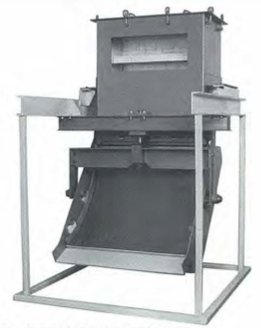040B-100 | 60º 40″ radius
040B-110 | 60º 30″ radius
040B-120 | 60º 61 3/8″ radius
____
Sieve Bends are used for both size classification and dewatering of fine particles in a slurry. A sieve bend screen has no moving parts and therefore, has no power requirements. These screens are primarily used in the coal industry, however, they are finding uses in mineral and industrial applications. Primarily, the range of separation for a sieve bend is from 100 mesh to 6 mesh. The advantages of sieve bends include low operating cost, the screen is reversible for longer screen life, they are quiet, no moving parts, and they are very efficient in processing high capacities of material. Capacities vary from 40 GPM of slurry per foot of sieve bend width to over 300 GPM of slurry per foot of sieve bend width. Typical construction is a mild steel frame, housing, and feed box with stainless steel screen. Our sieve bends have a 60-degree arc with radii of 30″, 40″, or 61 3/8.










